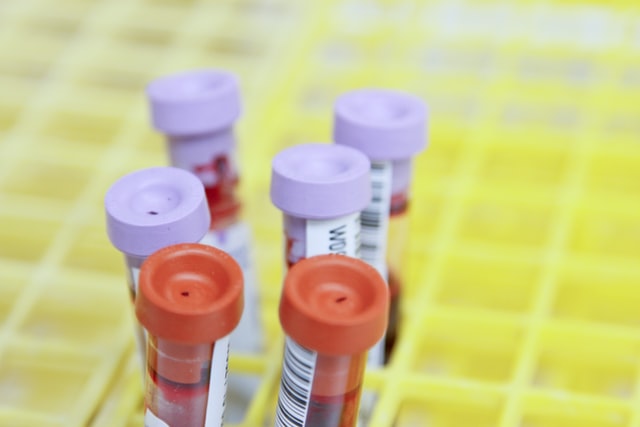How Widespread Prenatal Testing for Microdeletions Can Hurt Patients and Why the Genetic Testing Industry Needs More Accountability
By Katie Stoll,
Gene Cuisine
| 01. 04. 2022
image "Blood Samples" by Daniel Sone from the website of the National Cancer Institute
The New York Times published an important investigative piece this week, exploring concerns about expanded prenatal genetic screening. Specifically, the article focuses on the practice of prenatal screening for the possibility of a microdeletion condition in the fetus. The authors Sarah Kliff and Aatish Bhatia walk readers through some of the microdeletions that are often included as part of prenatal cell free DNA screening and discuss issues with the way these tests are marketed as providing accurate results and certainty when in fact most positive screen results end up being false positive. The article states that in interviews,
“14 patients who got false positives said the experience was agonizing. They recalled frantically researching conditions they’d never heard of, followed by sleepless nights and days hiding their bulging bellies from friends. Eight said they never received any information about the possibility of a false positive, and five recalled that their doctor treated the test results as definitive.”
The results of this investigation into patients’ experience with these...
Related Articles
By Pam Belluck and Carl Zimmer, The New York Times | 11.19.2025
Gene-editing therapies offer great hope for treating rare diseases, but they face big hurdles: the tremendous time and resources involved in devising a treatment that might only apply to a small number of patients.
A study published on Wednesday...
By Emily Glazer, Katherine Long, Amy Dockser Marcus, The Wall Street Journal | 11.08.2025
For months, a small company in San Francisco has been pursuing a secretive project: the birth of a genetically engineered baby.
Backed by OpenAI chief executive Sam Altman and his husband, along with Coinbase co-founder and CEO Brian Armstrong, the startup—called...
By Jessica Hamzelou, MIT Technology Review | 11.07.2025
This week, we heard that Tom Brady had his dog cloned. The former quarterback revealed that his Junie is actually a clone of Lua, a pit bull mix that died in 2023.
Brady’s announcement follows those of celebrities like Paris...
By Emily Mullin, Wired | 10.30.2025
In 2018, Chinese scientist He Jiankui shocked the world when he revealed that he had created the first gene-edited babies. Using Crispr, he tweaked the genes of three human embryos in an attempt to make them immune to HIV and...




